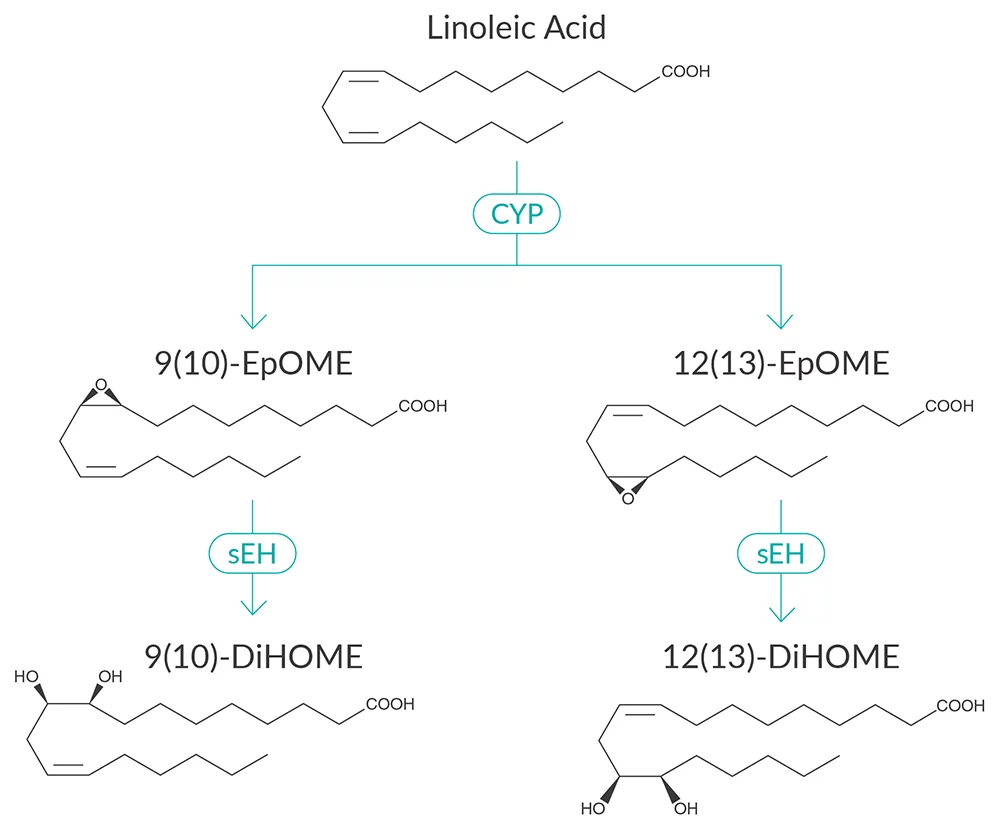Various fatty acyl lipid mediators (LMs) derived from dietary polyunsaturated fatty acids (PUFAs) modulate nociception. The modern diet is rich in linoleic acid (LA), which may present a risk factor for developing pain conditions. Although recommendations about fatty acid intake exist for some diseases (e.g. cardiovascular disease), the role of dietary fatty acids in promoting pain disorders is not completely understood. Here we report that dietary linoleic acid content is associated with plasma accumulation of pronociceptive lipid mediators. Our findings provide mechanistic insights into exaggerated nociceptive hypersensitivity associated with excessive dietary linoleic acid intake and highlight potential biomarkers for pain risk stratification. We quantified plasma LMs in male and female rats fed one of two custom diets from the time of weaning through nine weeks of age using LC-MS/MS analysis. Rats were randomized to receive one of two modified AIN-76A rodent diets each containing 5.1% fat. The standard corn oil was replaced with a custom triglyceride blend rich in either LA or oleic acid (OA; 18:1n-9), a monounsaturated fatty acid that is not metabolized to form LMs. In general, rats maintained on the LA-rich diet displayed greater plasma accumulation of pronociceptive LMs derived from LA, while accumulation of antinociceptive LMs was greater in rats maintained on the OA-rich diet. Using this approach, we demonstrate that exposure to a diet rich in LA promotes plasma accumulation of pronociceptive LMs, which likely contributes the exaggerated nociceptive hypersensitivity associated with excessive dietary LA intake.

